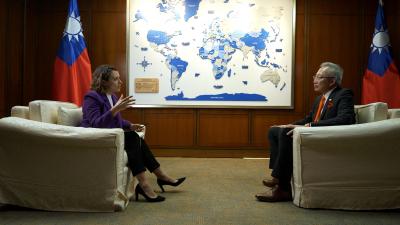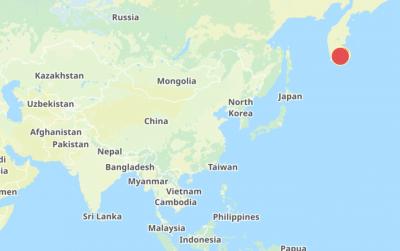A three-in-one vaccine for enterovirus, influenza and Japanese encephalitis has been developed by the National Health Research Institutes (NHRI), but it still has to pass clinical trials before it can be manufactured for the public.
If the vaccine passes the trials and is certified by the government, children younger than five years old might be spared from receiving several vaccinations to prevent infections of avian influenza virus H5N1, enterovirus 71 and Japanese encephalitis, researchers said.
A report on the development of the vaccine was presented by Huang Ming-hsi (黃明熙), an associate fellow researcher at the Institute of Infectious Diseases and Vaccinology, at a biomedical investment seminar last week.
Huang said there is no enterovirus vaccine certified for use in the nation, only a vaccine that is still in clinical trials, and while there have been no reported cases of H5N1 infection in Taiwan, its high mortality rate poses a health risk to the public.
Additionally, children must receive four injections for a complete Japanese encephalitis vaccination, he added.
Simply mixing the vaccines of the three types of viruses would reduce their effectiveness, so the NHRI has developed a new delivery system that mixes the inactivated virus, but avoids antigen interference that reduces effectiveness.
While the new vaccine has only undergone animal testing, Huang said the researchers “used mice as our experimental subject and observed that effectiveness reached greater than 90 percent” in targeted antibody levels induced by the vaccine.
Huang said the vaccine still needs to go through clinical trials before the NHRI can apply for government approval for use in humans.
However, National Taiwan University Hospital pediatrician Huang Li-min (黃立民) said that the recommended vaccination schedule for the three diseases is different, so putting them together into one vaccine might not be appropriate for clinical use.
Influenza viruses constantly change, so the vaccine might not be effective in preventing against the next influenza outbreak, he added.

“China is preparing to invade Taiwan,” Deputy Minister of Foreign Affairs Francois Wu (吳志中) said in an exclusive interview with British media channel Sky News for a special report titled, “Is Taiwan ready for a Chinese invasion?” the Ministry of Foreign Affairs said today in a statement. The 25-minute-long special report by Helen Ann-Smith released yesterday saw Sky News travel to Penghu, Taoyuan and Taipei to discuss the possibility of a Chinese invasion and how Taiwan is preparing for an attack. The film observed emergency response drills, interviewed baseball fans at the Taipei Dome on their views of US President

The Central Weather Administration (CWA) today issued a "tsunami watch" alert after a magnitude 8.7 earthquake struck off the Kamchatka Peninsula in northeastern Russia earlier in the morning. The quake struck off the east coast of the Kamchatka Peninsula at 7:25am (Taiwan time) at a depth of about 19km, the CWA said, citing figures from the Pacific Tsunami Warning Center. The CWA's Seismological Center said preliminary assessments indicate that a tsunami could reach Taiwan's coastal areas by 1:18pm today. The CWA urged residents along the coast to stay alert and take necessary precautions as waves as high as 1m could hit the southeastern

ECONOMIC BENEFITS: The imports from Belize would replace those from Honduras, whose shrimp exports have dropped 67 percent since cutting ties in 2023 Maintaining ties with Taiwan has economic benefits, Ministry of Foreign Affairs officials said yesterday, citing the approval of frozen whiteleg shrimp imports from Belize by the Food and Drug Administration (FDA) as an example. The FDA on Wednesday approved the tariff-free imports from Belize after the whiteleg shrimp passed the Systematic Inspection of Imported Food, which would continue to boost mutual trade, the ministry said. Taiwan’s annual consumption of whiteleg shrimps stands at 30,000 tonnes, far exceeding domestic production, the ministry said. Taiwan used to fill the gap by importing shrimps from Honduras, but purchases slumped after Tegucigalpa severed diplomatic ties with Taiwan

The Executive Yuan yesterday approved a southwestern extension of the Sanying MRT Line from New Taipei to Bade District (八德) in Taoyuan, with a goal of starting construction by late 2026. The 4.03-kilometer extension, featuring three new stations, will run from the current terminus at Yingtao Fude Station (LB12) in New Taipei City to Dannan Station (LB14), where it will connect with Taoyuan’s Green Line, New Taipei City Metro Corp said in a statement. This extension will follow the completion of core Sanying Line, a 14.29-kilometer medium-capacity system linking Tucheng (土城), Sansia (三峽)